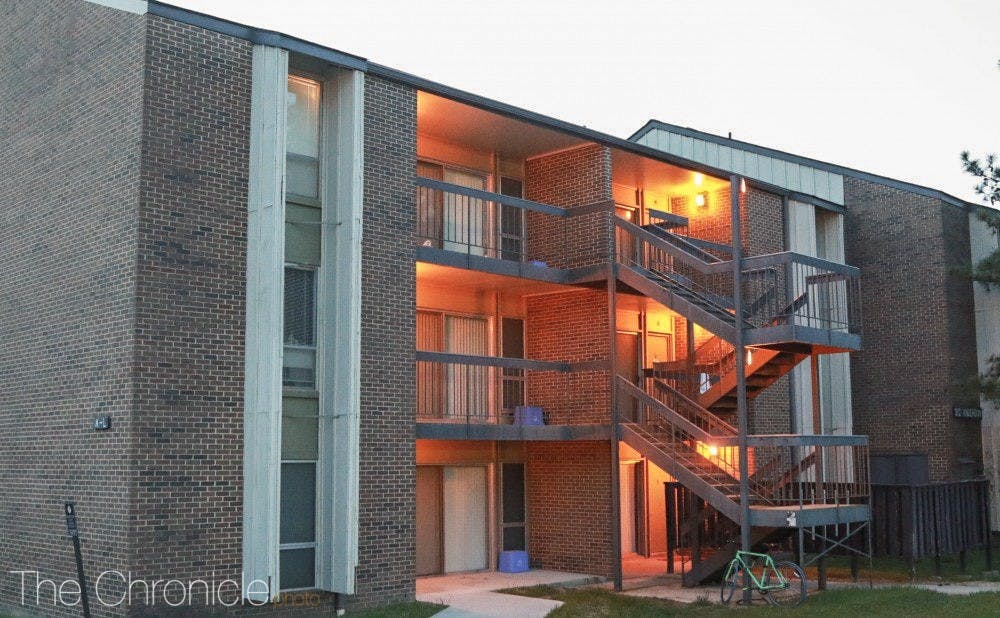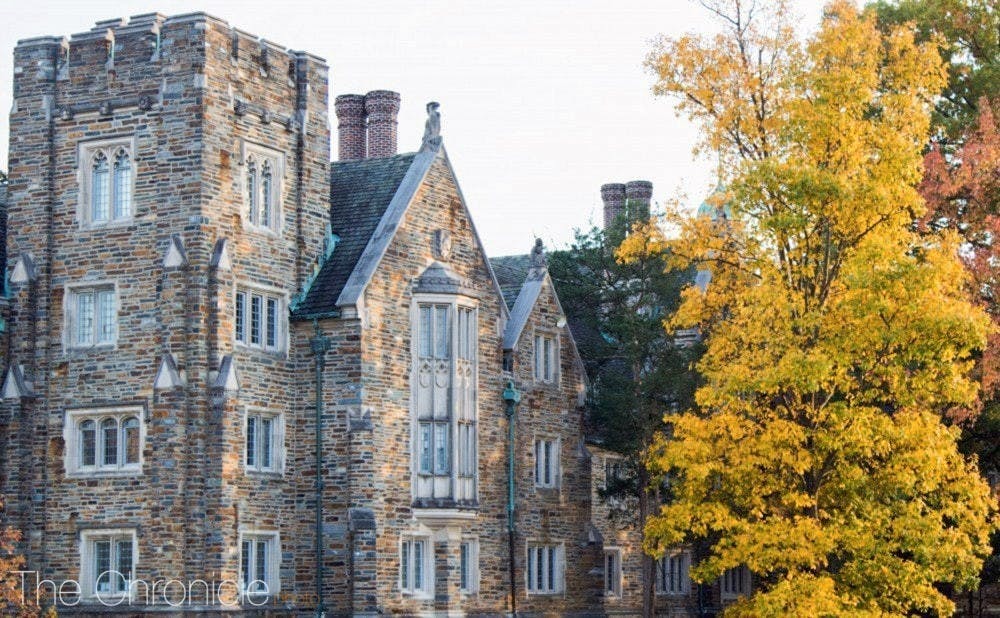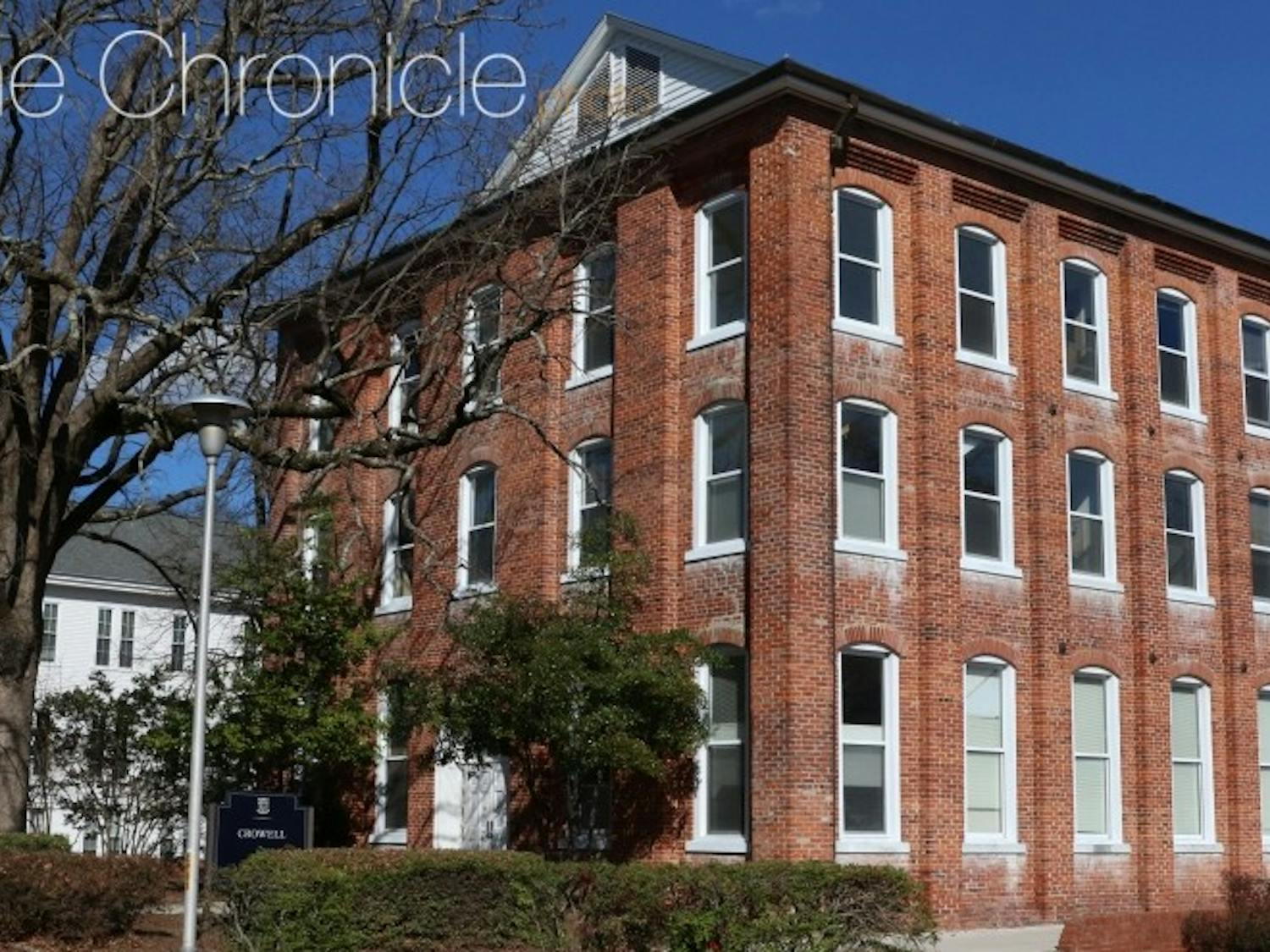Duke’s changing infrastructure, disparity in housing amenities and large proportion of students in selective living make housing reform a difficult case.
Dissatisfaction in housing was brought to light by the Duke Students for Housing Reform, a group created in February 2018 to address the negative housing experiences of students. According to DS4HR, a 2017 Duke Office of Student Affairs survey disclosed that just 56 percent of graduating Duke students reported that their on-campus housing provided a "sense of community and belonging."
Yet, many students interviewed expressed overwhelming satisfaction with their first-year housing experience in particular. Many of the reasons cited include forging relationships with people from different backgrounds and perspectives, feeling a sense of class affiliation and not having barriers to social interactions.
The Chronicle discussed what students hope to see for the future of housing at the University.
Is Duke's housing system inadequate?
Duke’s biggest issue with housing is divisiveness, according to junior Leah Abrams, a co-founder of DS4HR and the former opinion managing editor of The Chronicle. She believes that Duke’s housing system silos people into separate corners, leaving many students feeling isolated.
“People are not happy in a system of housing that reinforces social divisions, and seem to prefer the freshman year experience—where social divisions exist, but are not exacerbated by a restrictive housing system,” Abrams wrote.
She acknowledged that everyone deserves to live in a space where they feel comfortable and welcomed. Yet, if those spaces impede the ability to engage with others, then Abrams thinks the space must be modified.
Similarly, co-founder of DS4HR Kelsey Graywill ‘18 is concerned that housing is tied to social selectivity. While students may naturally separate into cliques similar to their fraternity, sorority or selective living group, it is not acceptable to institutionalize selectivity, she said.
Graywill lived independently in Sherwood, which she said was one of two independent houses at the time that had community. Without a good community in most independent houses, Graywill said many of her friends sought refuge in her house because they felt isolated.
“I think people don’t realize how lonely that is,” Graywill said. “It’s spending your days going to classes and meetings, and coming back and staying in your dorm room because you don’t know your neighbors, and there’s no motivation to hang out together because it’s just an independent house, right?”
Senior Miriam Levitin also said she knew many people who felt lonely in independent housing, which pushed them to rush again sophomore year to find a living community.
Levitin said housing has tainted her Duke experience. She was never able to find the community in housing that she experienced her freshman year, even after living with her sorority. Levitin is no longer in the sorority and now lives off campus because she says Duke did not provide the housing experience she hoped for.
In 2017, Kilgo began a Kilgo Rush, when the dorm held “fully inclusive, no pressure” events during the month of rush, said senior Sabriyya Pate, who helped found the program.
“The idea came about when the RAs began talking about how we can provide an alternative program for sophomores on West who aren’t involved in selective groups and to also counter the stigma of living in independent housing,” Pate said.
Kilgo Rush is a way to bring together Kilgo residents—including affiliated students—and counter the stressful environment of rush season, Pate explained. She said the rush events have had large attendance and that many freshmen preferenced Kilgo after attending rush events.
However, Interfraternity Council President Matthew Conley believes it is difficult to determine if the University has an issue with housing because its future policies are unknown.
Senior Emily Davis, also a writer in The Chronicle's sports department, said that while her housing experience on West Campus was not what she hoped, she does not believe there is an issue with housing. Davis, affiliated with a sorority that lives on Central Campus, lived in a block in West Campus dorms.
She was surprised by the lack of community compared to her first-year dorm—there were fewer open doors and people willing to meet each other—but she attributed that more to the students than the University.
“There wasn’t as much of an openness because people were more well-established on campus, compared to when you’re a freshman and more open to making connections,” Davis said. “I think that once people start to establish their groups, it makes sense to cultivate those relationships you consider long-term.”
Should Greek organizations and SLGs have their own living space?
Greek organizations and selective living groups are a prominent part of Duke’s housing culture. Approximately 34 percent of Duke students are Greek-affiliated, and about 15 percent of the class of 2018 was affiliated with a selective living group, according to data The Chronicle collected.
According to Joe Gonzalez, assistant vice president of student affairs and dean for residential life, of the students living on West or Central Campus in the Fall 2017 semester, 63 percent lived in independent housing, 21 percent lived in Greek-affiliated housing and 16 percent lived in SLG housing. 1168 students lived off campus in the fall of 2017.
Abrams feels that Greek organizations and SLGs create community, provide comfort and fill social gaps. However, she does not believe these organizations need a living space to be a community.
“These groups can exist and be strong without revolving around housing—I know because I feel so strongly tied to my SLG, despite the fact that I have never lived in its section,” she wrote.
Abrams explained that rush rewards extroverted personalities over others, and personality type should not dictate the housing experience of a student.
For instance, Levitin said she felt pressure to rush freshman year because her friends were rushing, so she worried about having a place to live and people to live with in independent housing. She joined a sorority and lived on Central Campus, yet she resented her sophomore year.

Graywill also felt that she had to rush—despite wanting to be independent—in order to have a family at Duke. She believes many people who did not anticipate rushing ended up doing so because they assimilated to the University's selective culture.
“People have normalized selectivity in our social life so much that they accept it as an integral part of where we live,” Graywill said.
Graywill and Levitin both believe Duke’s best option is to decouple housing and selective groups, and Levitin noted that many people in these groups already do not live in their sections.
Davis is a proponent that Greek organizations and SLGs should have their own housing. Living together facilitates better relations between individuals in a selective group than if they did not live together, she said, adding that rather than only seeing each other at designated or required events, living together allows spontaneous interactions and creates more sincere bonds.
“While we don’t have a big house for our sorority, we still have our Central section, and I think that it’s really good for the community of the organization to be able to say that this is my community,” Davis said.
Davis added that when she lived in independent housing, she often spent time in her section on Central. If Duke houses affiliated people into independent housing with non-affiliated students, she believes housing will still lack community because the affiliated students will leave the dorm to connect with their group.
Senior Stephanie Wiehe, president of the Panhellenic Association, noted that she has not met a Panhellenic woman who joined a sorority solely because of housing.
"We need to consider what our whole community wants, and what is best for the future students, not just ourselves," Wiehe wrote in an email. "Greek Life/SLGs do make up a significant portion of the undergraduate population, so I do believe Greek life should have a seat at the table when discussing housing reform."
Conley also believes that fraternities have more to offer than housing. He has enjoyed the option of selective housing, but he hopes reform will happen with input from those it will affect the most. Conley believes an equal housing experience should be the goal, whether it be independent or selective.
“If selective housing in its current form does more harm than good from our student body's perspective, then we should be willing to change as a university,” he wrote. “If students feel strongly that this system should stay, then we should find a way to ensure it does.”
Is the new House Linking program beneficial?
The House Linking Program allows the opportunity for students in a freshmen dorm to be housed together on West Campus if they opt into the program. The program was piloted by Lizzie Speed ‘18, former vice president of campus life, and Gonzalez.
In an email, Speed said she hopes the program addresses the inequity that affiliated students are able to live in groups upwards of 30 people, while independent students can only block with up to six students.
“The House Link program was designed to aid continuity of the special communities that are so unique to East Campus houses,” Speed wrote. “I hope that students who feel drawn to rush because they do not want to live independently, but who otherwise do not feel that selective groups are right for them, will feel that they now have an alternative community-based housing option.”

Last year, the House Linking Pilot Program was offered to three dorms on East Campus. According to Gonzalez, Brown had 25 students, Giles had 11 students and Blackwell had one student opt into the Link Program. The Blackwell student was re-directed to the regular housing process because no one else linked.
All first-year dorms this year will be offered the House Linking Program.
The goal of the pilot program was to get a sense of how many students would choose to link and ensure they could be accommodated, Gonzalez said. Even if all dorms had the same participation as Brown, Gonzalez feels confident that housing will be able to accommodate everyone who links.
Students who link do not know which dorm they will live in on West until housing assignments are released. They also do not have the option to rank dorms. This decision fixes an issue that arose 10 years ago, when Duke had a similar linking program. The old program predesignated where each freshman dorm was matched on West Campus, so students chose to link largely based on location.
“Using the houses as the community basis makes great sense because they’re so diverse and they’re randomly formed,” Gonzalez said. “We’re not as interested in larger blocks that forge more from a social group or common interest of some type.”
Conley is in favor of the House Linking Program because he believes that more freedom of choice for students is beneficial. The link also allows larger groups of first-year friendships to continue compared to blocking, he noted.
However, Abrams does not think the program will be effective unless it is mandatory for everyone. If the goal of the program is to maintain the community of the first-year dorm, but only a fraction of the dorm links, then it “defeats the entire purpose of the randomly generated community,” she wrote.
Graywill echoed a similar sentiment, calling linking a “halfway solution” because rush occurs before the House Linking option, so few students will choose to link. She also noted that although East Campus communities are often romanticized to be very close, many students feel distant from their dorms.
Should Duke adopt a residential college system?
The residential college system randomly assigns students into a residential college, where they spend all four years. The colleges are microcosms of the school and often hold their own events and have their own dining halls. Peer institutions like Yale and Rice institute this living system with hopes to promote cohesiveness.
Abrams liked the idea of a residential college system because it provides the opportunity for communities consisting of randomly grouped individuals to develop throughout several years. She wrote that the system is not restrictive and can facilitate friendships outside of the residential college as well.
Davis agreed her housing experience would have been more fulfilling had she lived with her freshman dorm all four years.
“It’s not just a community I affiliated with, it’s not something I chose but something I created,” Davis said. “I think that’s a special thing—to meet a bunch of strangers and be really good friends with them by the end of the year—and I think it would be more special if you had more time to engage with those conversations and get to know them.”
However, she acknowledged that the system would be hit or miss because many students did not enjoy their first-year housing experience.
Conley had concerns about how Duke would ensure equal standards of living given the differences in dorm quality and location, and Graywill expressed similar concerns, explaining that West Campus dorms are large with small common rooms, and they lack characteristics such as separate dining halls.
“I do not believe Duke has the infrastructure to support a residential college system in the same way as institutions like Harvard and Yale,” Conley wrote. “I hope that our solution is not simply to model the next era of housing off of another university's system. We can create a new system that fits our University perfectly.”
What are the future hopes for housing?
Graywill hopes that students are vocal about the need for housing reform.
“The voice has to come from the students and that has to be loud, because otherwise administrators will continue to operate on their own timeline,” Graywill said.
She noted that many administrators assume they know what is best for the University because they look at long-term outcomes, whereas students consider short-term effects. Yet, many students are dissatisfied with the current housing model that makes them feel isolated and lonely.
Gonzalez noted that housing matters, and the conversations on campus pose important questions and ideas.
"Whether this leads to strategies to strengthen the current model or a new approach, ultimately we want to continue building the strongest residential experience possible," he wrote.
Abrams and Levitin both stated that they just hoped for change. Because students are only on campus for four years, Levitin said implementing change may be difficult for current students, but would benefit future classes. For example, Duke’s decision to make East Campus an all-freshman campus in 1997 faced resistance, but it is now one of the defining features of the school, Levitin said.
Given the University's unique campus qualities, Conley and Wiehe both hope that Duke considers the input of all students to create a housing system that is particular to Duke.
Davis hopes Duke continues to facilitate community in whichever system it decides to pursue.
“It’s really easy to get lost in the sea of thousands of undergraduates and large campus, and it’s very easy to feel overwhelmed by that,” Davis said. “My freshman housing experience showed me that if you live with good people, you have the opportunity to make Duke feel a little bit smaller.”




